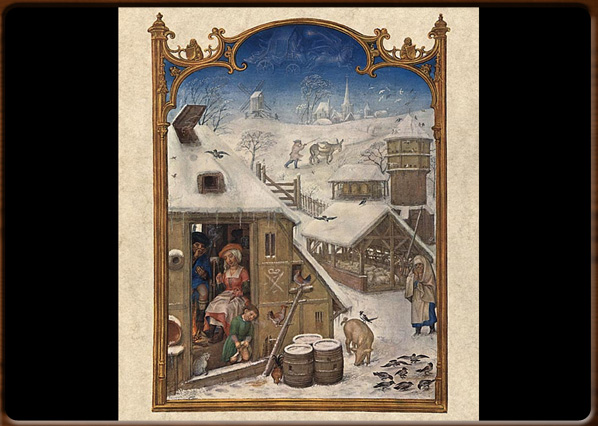
Grimani breviary.XVI s., Biblioteca Marciana.

Bookbinding of 1575.


No video
Artistic bookbinding is one of the so-called minor arts. Sumptuous Byzantine and oriental bindings and ancient Roman diptychs are now considered real works of art., Venice helped develop and teach this art, especially during the years c. 1470 - 1570.
The art of bookbinding in Italy until the mid 1400s was distinguished by its simplicity. Then, thanks to Moorish influences introduced by the Aragonese in Naples, increasingly rich decoration became the norm. Venice, Rome and Florence quickly adapted to the new trend.
The result was Moroccan leather bindings in black, brown or red, with dry impressions of various geometric designs. This type of binding was often enriched in Venice with the addition of artistic metal studs to protect the edges of the volumes.
Around 1480, coinciding with the arrival of some Persian artisans, books in Venice started to feature frames with a clear Eastern flavour and pictures, no longer branded on the leather but hand-drawn with liquid gold.
The Leonardo Bruni in St. Mark’s Library, published by one of the Venetian workshops, is a fine example of the craftsmen’s skills.
One such bookbinder was Aldo Manuzio, printer and bookbinder, who created an elegant edition of books between 1495 and 1519 with pages with stylised corners bound in fine Moroccan black leather.
Another foreign influence was the use of German graffito leather: a technique that made it possible to line not just books, but also cases and boxes of varying form and the decorative parts of shields and armour.
An ancient custom of the Venetian Republic that helps us trace developments in bookbinding skills and tastes was that of “Commissioni”: magistrates and consuls sent to administer cities ruled by the Venetians would receive parchment manuscripts with instructions on their expected conduct in political and administrative matters upon their appointment. These volumes were always dated and stamped with a portrait of the Doge, bound in precious Moroccan leather (usually red) and dry embossed decoration. In 1560 or thereabouts, these “Commissioni” were influenced by the school of Constantinople, thus becoming more conspicuous, gilded and lacquered, sometimes using mother-of-pearl, so that they were like valuable caskets, known as “Dogali”.
Over the next few centuries, the Venetian art of bookbinding flourished and reached its peak during the 1700s: the Venetian book industry, thanks to an efficient organised trade system, ruled all the Italian markets unchallenged and enjoyed a position of pre-eminence in the Iberian countries and in the Levant.
It was only during the 1800s that Venetian bookbinding faltered when the Venetian publishing industry lost its supremacy in Italy, thus crippling the entire book industry.
1300 - 1400 - - rev. 0.1.6